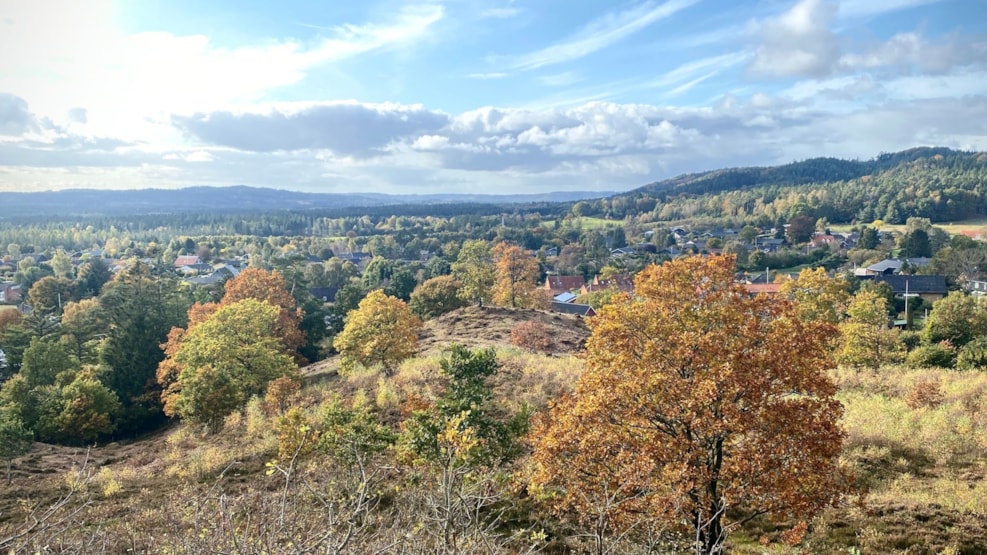
Gl. Rye
Gl. Rye is a lovely and vibrant village with many community groups and clubs, including Bageriet, which houses a co-working space, coffee shop, and more. The village also hosts a shared summer holiday week, uge30.dk, featuring activities for all ages spread throughout the entire village.
Holy spring, pilgrims and royal election in Gl. Rye
Gl. Rye is also rich in history, notably due to Saint Søren’s Spring, which was regarded as a holy spring capable of miracles. A written record from 1405 documents a decree sending pilgrims to Rye (as Gl. Rye was called before the arrival of the town of Ry).
In the 1400s, pilgrimages to the spring increased, and so‑called spring markets emerged, generating income for the village, Saint Søren’s Church, and Øm Abbey. This prosperity led to the construction of a large cruciform church—cathedral in scale—at the top of the hill, and the site’s importance was underscored when it hosted the royal election in 1534, which triggered the start of the Reformation.
Today, Gl. Rye is an attractive village set in the scenic Lake Highlands, close to large lakes, heath-covered hills, forests with the country’s tallest spruce trees, and just a few kilometres from Himmelbjerget.
Saint Søren’s spring and church
Saint Søren’s Spring has been known as a pilgrimage site since 1405 due to tales of healings attributed to the spring, which was sanctified by Saint Søren.
Legend says Saint Søren was a peasant boy who became a monk, priest, and later a bishop. The reason the spring was named after him is unclear, but as mentioned, it’s documented as a pilgrimage destination in 1405.
During the 15th century, pilgrim numbers rose, and Øm Abbey and Saint Søren’s Church held three annual spring markets, boosting the region’s economy. With donations from pilgrims and revenue from the markets, the church was expanded to cathedral proportions—a length of 52 m and a transept width of 33 m.
Pilgrimages ceased with the onset of the Reformation in 1536, and the church gradually fell into disrepair. The exact location of the original spring is uncertain, as many springs emerge in the hills surrounding Gl. Rye.
Øm Abbey
Near Gl. Ry is Øm Abbey Museum, beautifully situated in the East Jutland Lake Highlands among the ruins of Denmark’s best-preserved medieval Cistercian monastery. The ruin park, covering two hectares, displays the most complete ground plan of any Danish Cistercian abbey.
Beautiful nature
Gl. Rye lies in some of Denmark’s most beautiful nature: forests, heathland, streams, lakes, and much more are within easy reach. There are plenty of hiking and cycling routes around Ry, and if you want to explore by water, you can take a boat or canoe trip on the region’s many lakes and streams.
Himmelbjerget
Himmelbjerget is one of Denmark’s highest points, adjacent to the charming tourist town of Ry. As tourism began in Denmark, Himmelbjerget became one of the country’s first attractions. The Himmelbjerg Tower was erected in 1875, stands 25 m tall, and commemorates King Frederik VII—who on 5 June 1849 granted the Danish people their free constitution.
Designed by architect L. P. Fenger, the tower bears an inscription:
“In memory of the King – Frederik VII – the Danish people’s friend – givers of the Constitution.”
It costs 10 kr to climb the tower; tickets are sold at its base. The entrance fee is used for maintaining the area.
You can drive to Himmelbjerget (paid parking available), take a ferry boat from Ry or Silkeborg harbours, or walk the 7 km forest trail from Ry to the foot of the hill.